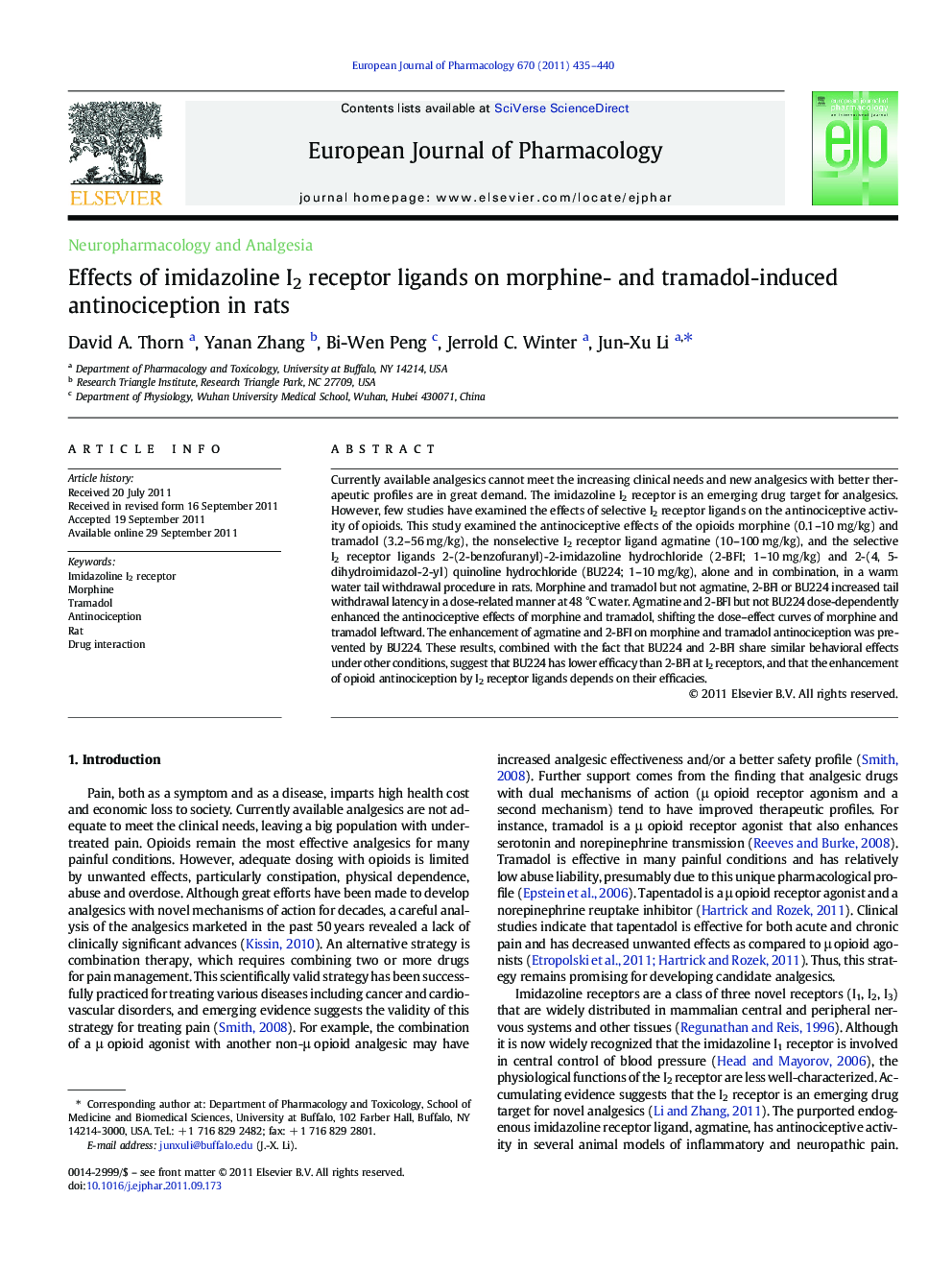| Article ID | Journal | Published Year | Pages | File Type |
|---|---|---|---|---|
| 5829962 | European Journal of Pharmacology | 2011 | 6 Pages |
Currently available analgesics cannot meet the increasing clinical needs and new analgesics with better therapeutic profiles are in great demand. The imidazoline I2 receptor is an emerging drug target for analgesics. However, few studies have examined the effects of selective I2 receptor ligands on the antinociceptive activity of opioids. This study examined the antinociceptive effects of the opioids morphine (0.1-10 mg/kg) and tramadol (3.2-56 mg/kg), the nonselective I2 receptor ligand agmatine (10-100 mg/kg), and the selective I2 receptor ligands 2-(2-benzofuranyl)-2-imidazoline hydrochloride (2-BFI; 1-10 mg/kg) and 2-(4, 5-dihydroimidazol-2-yl) quinoline hydrochloride (BU224; 1-10 mg/kg), alone and in combination, in a warm water tail withdrawal procedure in rats. Morphine and tramadol but not agmatine, 2-BFI or BU224 increased tail withdrawal latency in a dose-related manner at 48 °C water. Agmatine and 2-BFI but not BU224 dose-dependently enhanced the antinociceptive effects of morphine and tramadol, shifting the dose-effect curves of morphine and tramadol leftward. The enhancement of agmatine and 2-BFI on morphine and tramadol antinociception was prevented by BU224. These results, combined with the fact that BU224 and 2-BFI share similar behavioral effects under other conditions, suggest that BU224 has lower efficacy than 2-BFI at I2 receptors, and that the enhancement of opioid antinociception by I2 receptor ligands depends on their efficacies.
